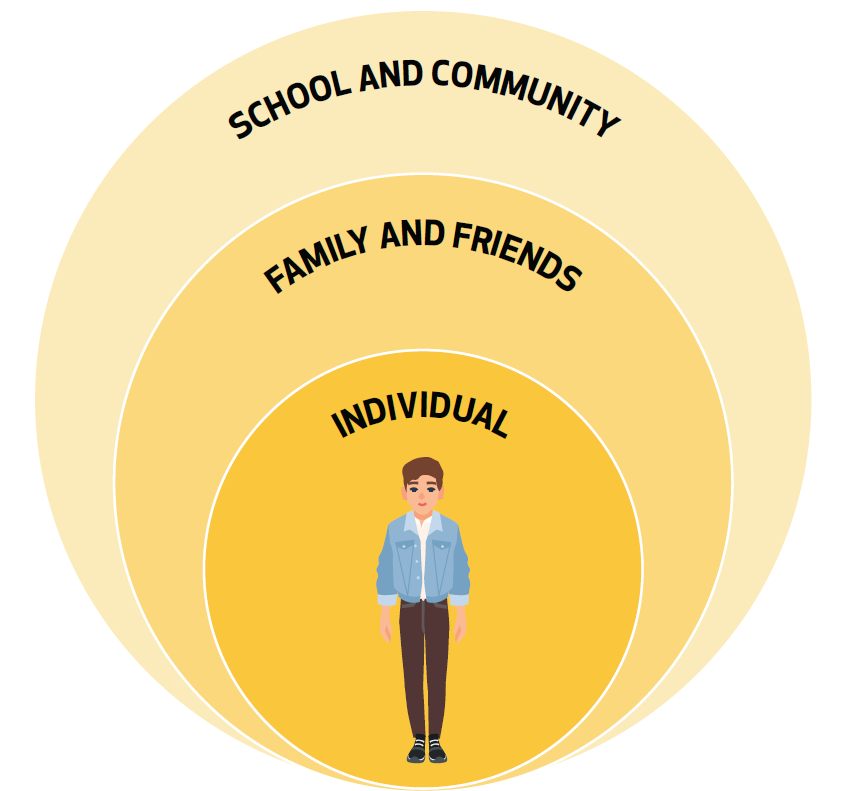
Protective and risk factors are the two elements in the development of resilience. Resilience is often referred to as the ability to bounce back from adversity. This definition implies that individuals use internal and external resources available to them (protective factors) to overcome difficulties (risk factors).
While their name is self-explanatory, truly understanding protective and risk factors and the way they interact in people’s lives is worth some explanation.
Defining Protective and Risk Factors
Protective factors are attributes, like skills, strengths or resources, that help shield individuals from the development or worsening of undesirable health conditions and enhance their capacity to cope. For example, adequate sleep is an important element in protecting someone against symptoms of mood disorders such as anxiety and depression.
Risk factors are attributes that contribute to the development or worsening of undesirable conditions. For example, risk factors include oppositional behaviours, familial conflict and social isolation. Any of those might increase the risk of mood disorders or maladaptive behaviours such as drug and alcohol consumption.
Characteristics of Protective and Risk Factors

1.They are multidimensional
Protective and risk factors form a multidimensional construct. That is because they exist in different dimensions of individuals’ lives. Everyone has protective and risk factors at the individual level (ex. physical activity), at the family and friend level (ex. support), and at the community level (ex. school connectedness).
These factors from any dimension influence circumstances of other dimensions of life. For example, getting enough quality sleep can protect someone from unwanted outcomes at the family level, such as family conflict, and from outcomes at the community level, like poor work/academic performance.
2.They are either static or temporal
Protective and risk factors can be static, meaning that they do not change. These factors are fixed and will remain constant throughout one’s lifespan. That is usually the case for biological factors. Since they are static, there is little to no point in interventions being aimed at these factors. An example of a static biological risk factor might be having a genetic predisposition to mood disorders.
Protective and risk factors can also be temporal, meaning that they can change. Interventions are most effective when targeting temporal factors. Temporal protective and risk factors fluctuate as an individual’s life circumstances change, like when moving to a new city, for example. With changing life circumstances, one may either gain or lose protective/risk factors. An example of a temporal protective factor might be having friends you can count on.
3.They are interactive
Protective and risk factors interact in many complex ways to influence our lives.
First, they act like blocks, in the sense that they are stackable. One can accumulate as many protective and risk factors as there are, and their effect is cumulative. Meaning that with more protective factors, one is more protected from unwanted circumstances. With more risk factors, one is at greater risk of undesirable circumstances. For example, someone living alone with a health condition and a low level of education is at a greater risk of living in poverty. Each factor is adding a cumulative risk to the outcome living in poverty.
Second, some factors are closely associated with others. They are like close friends. Often, one does not come without the other, or at least, one gives you a greater chance of also having another. For example, living in poverty is often also associated with poor nutrition, and strong school connectedness is often associated with stronger academic performance.
In short, both protective and risk factors are at play in building resilience. They are present in every dimension of individuals’ lives. They can be static or temporal and interventions should focus on building temporal protective factors. Finally, both protective and risk factors are interactive and cumulative.
